I’m not sure if you have heard this, but we are now in the midst of the latest in a long series of “most important elections of our lifetime.” It’s a match-up between the most accomplished President of my adult lifetime versus the most authoritarian, racist, and incompetent President in U.S. history, and somehow it’s going to be a very close race.
Accordingly, anxiety among my friends is running high. Everyone is pondering what they can do to influence the outcome of the election.
There are many ways to influence the election – donating, fundraising, phoning, talking to loved ones, voting, and grassroots volunteering, among many others. Maybe because I work in public relations, used to work in politics, and am outspoken about my views, friends occasionally ask for my thoughts about how to best persuade their networks through social media activism.
I don’t have a good short answer. But I do have a lousy long one. This post explains how I do social media activism, and the method to my madness. I don’t have all the answers, and am surely making plenty of mistakes, but I hope this provides food-for-thought to help you figure out what kind of social media activism feels right for you.
For what it’s worth, here are a few strategies that I use, very imperfectly, when communicating on social media about policy issues, candidates, and elections.
Social Media Activism Strategies
Show Up. First, I show up. In a world where we now have dozens of channels for self-publishing, we all have agency when it comes to political communications. Political communications is not just someone else’s job –Biden’s, Schumer’s, Walz’s, Jean-Pierre’s, Krugman’s, Sykes’, Carville’s, Maddows, etc. It’s also our job.
Because of ubiquitous social media platforms, for the first time in human history we all can now communicate quickly and efficiently with dozens, hundreds, or thousands at a time, several times per day. Amidst our family pictures, pet humor, and recycled memes, we can include peer-to-peer activism in our social media feeds.
So, let’s say that you’re upset that your friends don’t know about Biden’s achievements. Show them.
Or maybe you’re frustrated that so many in your network don’t follow the news enough to know about Trump’s attacks on the middle class? Regularly condense and share that news.
Perhaps you can’t stand that conservatives have an outsized presence on your news feed and you worry that is skewing your friends’ viewpoints. Provide balance with the other side of the story.
The bad guys have figured out how to use social media to their advantage, including with AI bots. The good guys should too.
Woody Allen famously said that “80% of success is showing up.” Something like that applies to peer-to-peer social media communications. Showing up in social media discussions is no guarantee that we will persuade anyone. But if progressives all remain silent while conservatives speak out, progressives are guaranteed to lose the arguments.
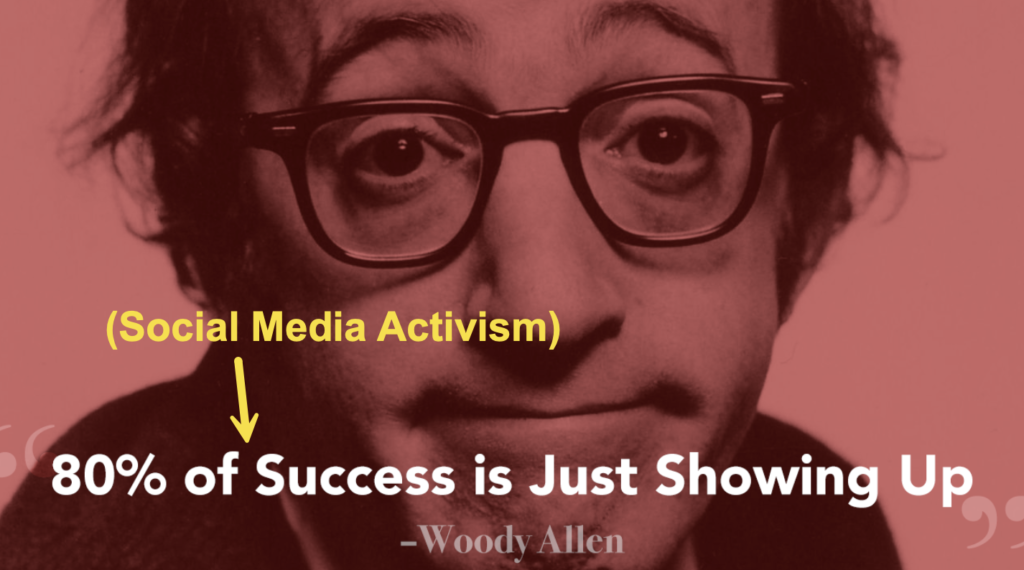
Don’t Rely on Politicians To Deliver Your Messages. Joe Biden is never going to influence many people in your life. Anything he or his staff say, even if eloquent and well-supported with credible facts, will be disregarded by cynical swing voters as political, tribal, and self-serving. Public opinion polling bears this out.
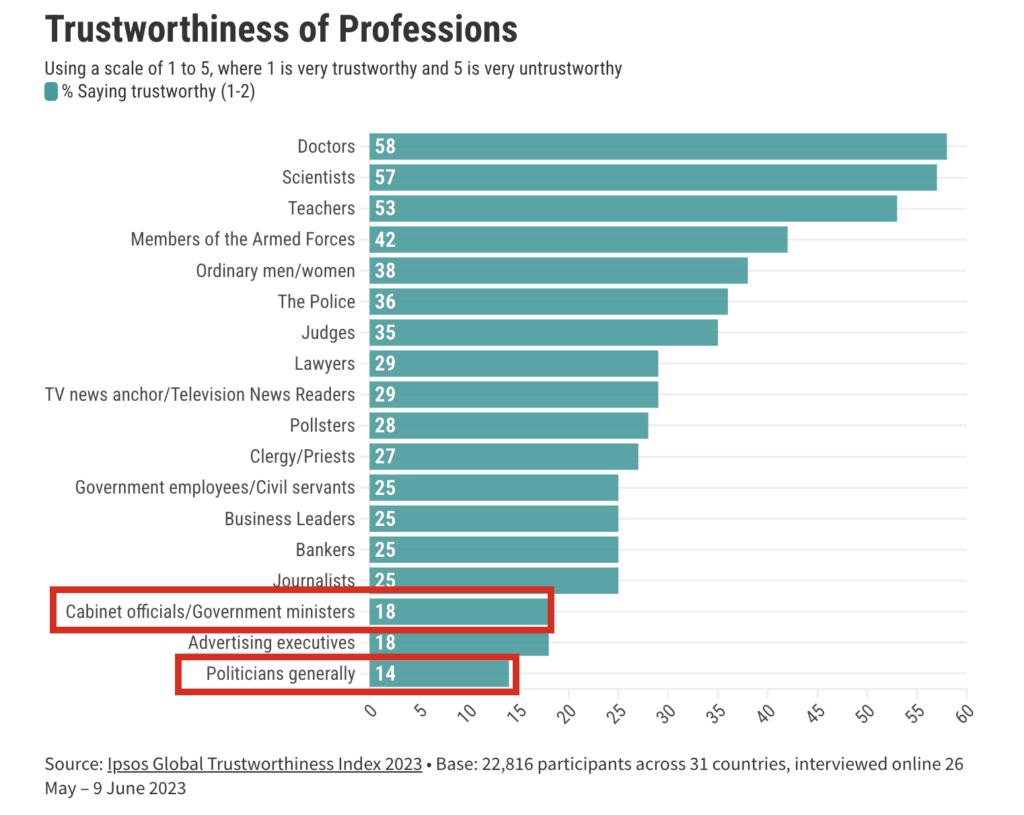
This is why peer-to-peer messaging is more persuasive than politician-to-peer messaging will ever be. So, quit complaining about politicians being poor communicators and take accountability for doing your part.
Forget About “The Base.” Close elections aren’t decided by “base” voters — dyed-in-the-wool Republicans and die-hard Democrats. They’re decided by the roughly 30 percent of Americans who are “swing voters.” Swing voters are soft-Republicans, soft-Democrats, and voters who identify as “independents.” These folks tend to swing back and forth between political parties.
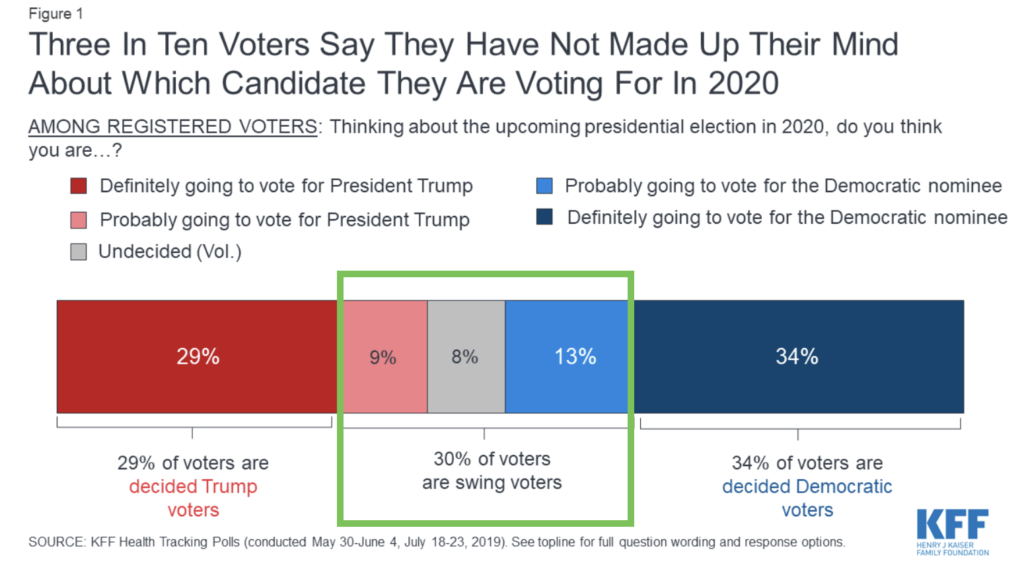
To be more specific, the people who really matter are swing voters in states that are the most closely contested, such as Georgia, Pennsylvania, Wisconsin, Michigan, Arizona, North Carolina, and Nevada. However, social media posting can’t be targeted by geography, so don’t worry about this kind of battleground state targeting.
Because swing voters decide the outcomes of close elections, when drafting messages I try to think about addressing people in my life who are undecided. I craft my message in a way I hope that good old Neighbor Fencesitter or Uncle Stradler might find most persuasive.
At the same time, when committed Republicans are screaming at me, I don’t let them scare me away, bum me out, or influence my approach. I also don’t use the partisan “red meat” language that I know my partisan Democratic friends crave. I do occasionally post on Democratic issues to get Democratic friends more motivated and activated.
However, again, the most important goal of my social media activism is to persuade the all-important swing voters, not Democrats and Republicans.
Inform Your Messaging With Polling. If you’re ambitious, it can also help to occasionally search the internet for polling to inform your posts. I’m not talking here about “horse race” findings about who would win if the race were held today. I’m talking about polling focused on issues and messages.
In your posts, stick to the issues where survey research tells us that, 1) swing voters support the progressive position and 2) the issue is important to swing voters. Among other issues, stress health care, Social Security, insurrection, drug price controls, and reproductive health rights. Stay away from other issues, such as relatively obscure foreign policy issues. Your messages need to be chosen with swing voters’ biases and priorities in mind, not yours.
Also, seek out polling that helps you understand what type of arguments are most persuasive with voters. For instance, surveys tell us which ways you can talk about Biden’s age that are most persuasive to young adult voters.
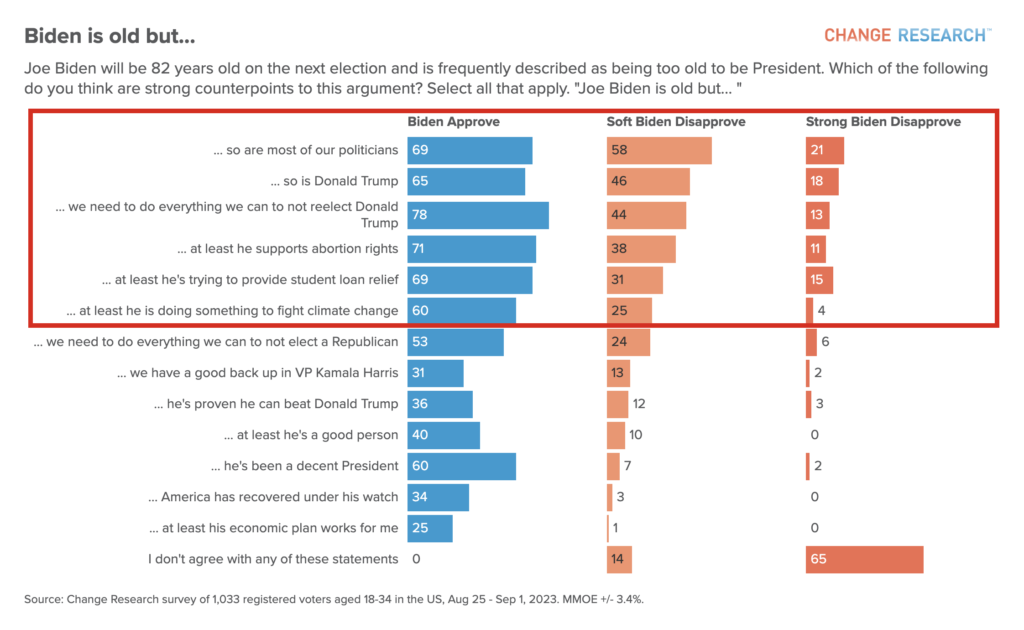
Deliver the News. More than two-thirds of Americans get at least some of their news via social media feeds, with Facebook being the top source. Therefore, consider becoming a self-appointed news curator and summarizer for your followers.

I regularly post excerpted news and commentary, often derived from behind paywalls. I understand that most won’t read more than the headline of the items I share, if that. But the hope is that they will occasionally stop and read, and that exposing them to information that they wouldn’t otherwise see can have an impact on a close election.
Include Humor. Using humor to make your points disarms critics and makes messaging more fun for both the messenger and the audience. So sprinkle political satire, cartoons, and self-deprecation into your posts.

While humor has its place, pay attention to the line between welcomed humor and off-putting snark. Personal attacks and over-the-top derision are cathartic for partisans. But remember, the point of all this is not to make your like-minded pals snicker. It’s to persuade fence-sitters, they tend to tune-out harsh political mud-slinging.

If you don’t want to drive away persuadable folks on the center-right and center-left, stick to politely, reasonably, and calmly making matter-of-fact points about Trump’s policies, words, and actions, rather than delivering critiques focused on his make-up, body parts, hair style, weight, supporters, and family members.
Simplify and Condense. I regularly ignore my own advice on this, but it’s important to simplify and condense messages as much as possible. Many lightly engaged social media scrollers will skip right by your message if it’s not bite-sized.
There’s a place for longer posts, but most swing voters are usually not interested enough to consider your viewpoints for more than a few seconds.
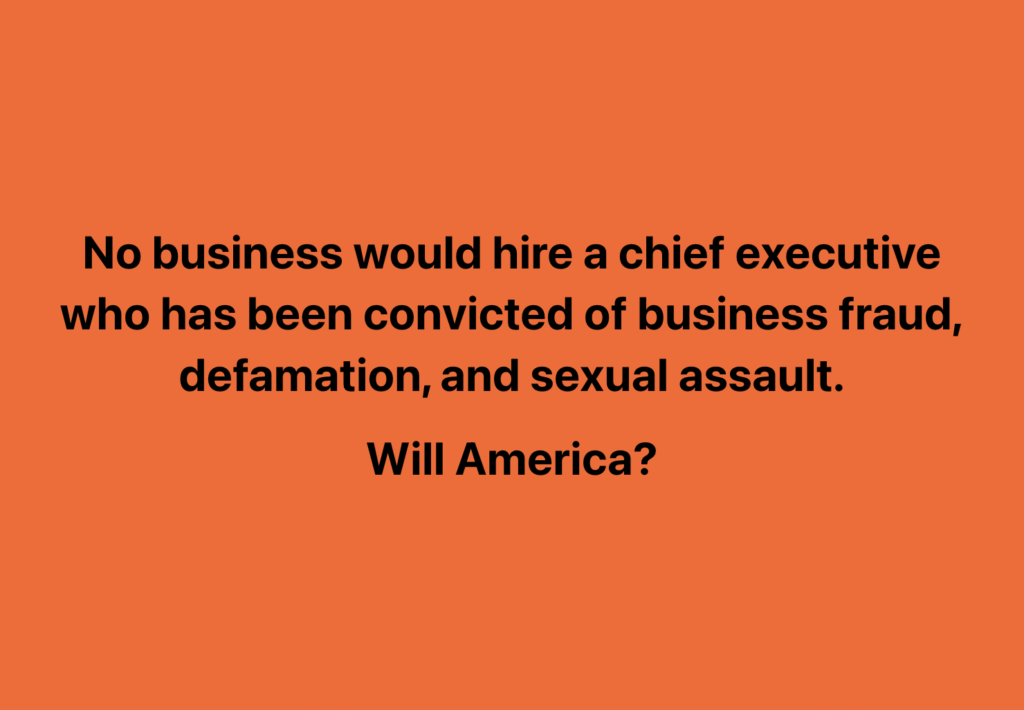
So, give them more than they want — short and simple.

Grow Thick Skin. Speaking up about candidates and issues can be discouraging and exhausting. One of my favorite observations from the writer Namoi Shulman helps remind me why I still have to enter the fray, even when it’s uncomfortable:
“Nice people made the best Nazis.
My mom grew up next to them. They got along, refused to make waves, looked the other way when things got ugly and focused on happier things than “politics.” They were lovely people who turned their heads as their neighbors were dragged away.
You know who weren’t nice people? Resisters.”
Throughout history, the resisters who have improved the world had to have very thick skins. If we want to make a difference, we have to summon the courage to be more like them.
Be Persistent. I once heard a rule of thumb from an advertising executive that consumers don’t even begin to recall a message until they hear it at least seven times. That’s why advertising works, because it can deliver message repetition until the message eventually begins to stick.
By the way, the number seven in that claim is wholly non-scientific. The precise number obviously will vary depending on variables specific to each topic and circumstance. However, the overall point of the ad man’s adage remains valid: We can’t say something once or twice, and assume our job is done.
If you prefer inspirational metaphors to advertising rules of thumb, here is one that has stuck in my head over the years:
“A river cuts through a rock not because of its power, but because of its persistence.”
While that quote from an unknown source might sound trite, it makes an important point. Few of us have much political power in the traditional sense. But we are capable of being persistent communicators, and over time persistence can make a difference.
Skeptical? Trump was like that persistent river delivering demonstrably false messages about the 2020 election being “stolen. His unremitting repetition of his Big Lie worked with a depressingly large swath of Americans.
Truthtellers need to emulate Trump’s persistence if we are going to beat him.
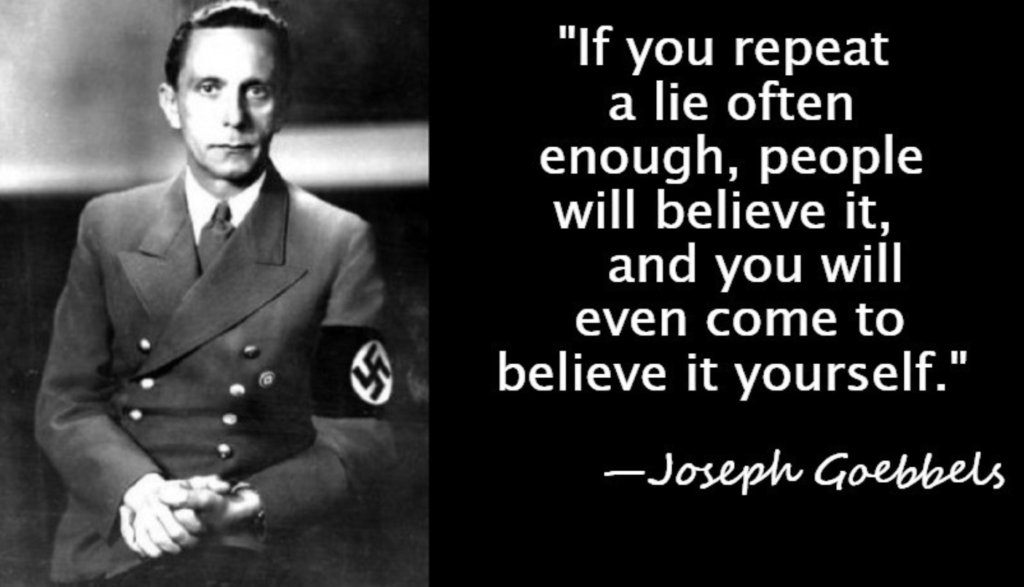
Stay on Offense. The tired cliché “the best defense is a good offense” is as true in politics as it is in sports. So, stay on offense. Stress the strengths of your policies and candidates, not their weaknesses. Deliver those messages proactively, as opposed to always reacting to your opponents’ inaccurate posts. And make your points confidently and unapologetically. Again, mirror Trump.
Will Any of This Work?
If you do all these things, I can’t guarantee that your candidates and ideas will prevail. So why bother? In our closely divided country, elections are routinely decided by razor-slim margins. Therefore, in many elections having even a minuscule impact on the awareness and attitudes of swing voters can be decisive.
If doing peer-to-peer activism on social media feels futile to you, ask yourself this question: When ultra-conservatives do the things discussed in this post, do you think they are wasting their time? If you think their social media activism is making a difference, why do you conclude that your social media activism can’t make a difference?
I understand why many people don’t want to speak out about political views on social media. I really do. It can be exhausting, discouraging, and controversial with our friends and family. But if reasonable Americans allow ultra-conservative extremists to have the social media stage disproportionately to themselves, we shouldn’t be surprised when MAGA viewpoints carry the day, and we suffer the consequences.

What a superb, constructive piece about the election forthcoming. I will be sharing on every platform I can find. It’s a roadmap for how we can win and win decisively. And the advice about snark, much as I love it (and as easy to do as it is in the age of Trump), is spot on. Thanks, Joe.
I appreciate that, Noel. It means a lot coming from you.